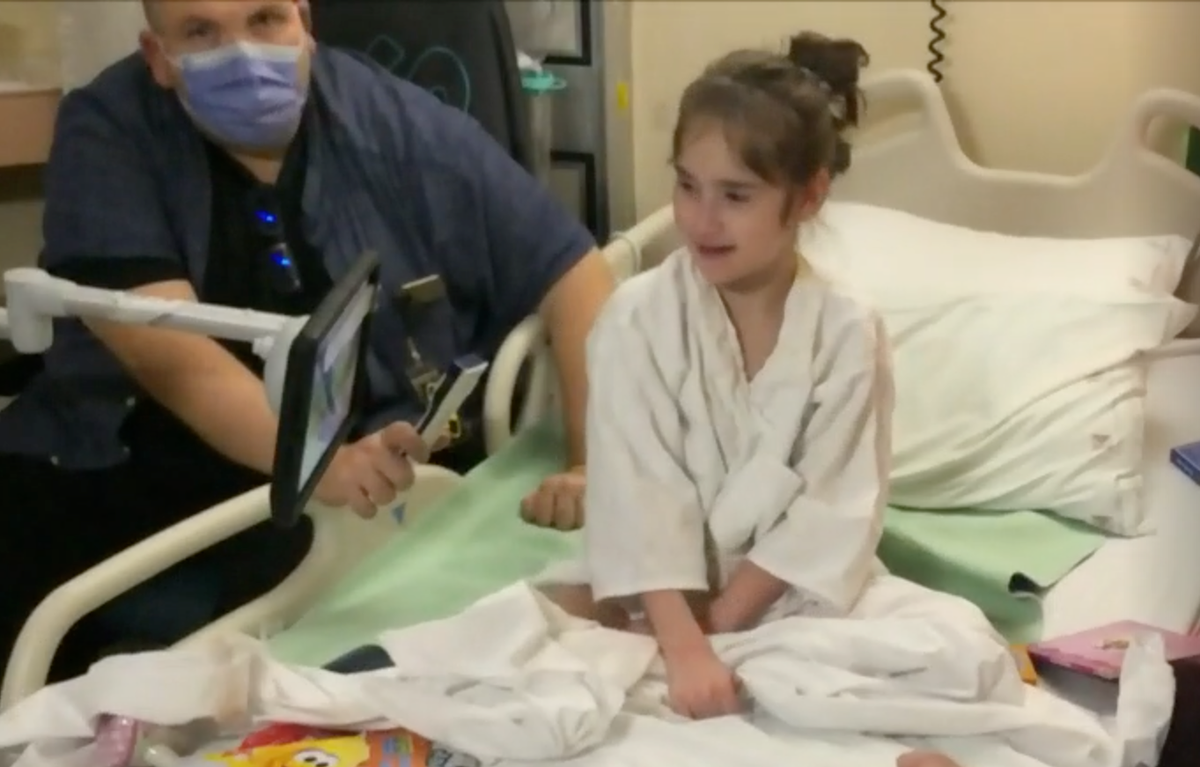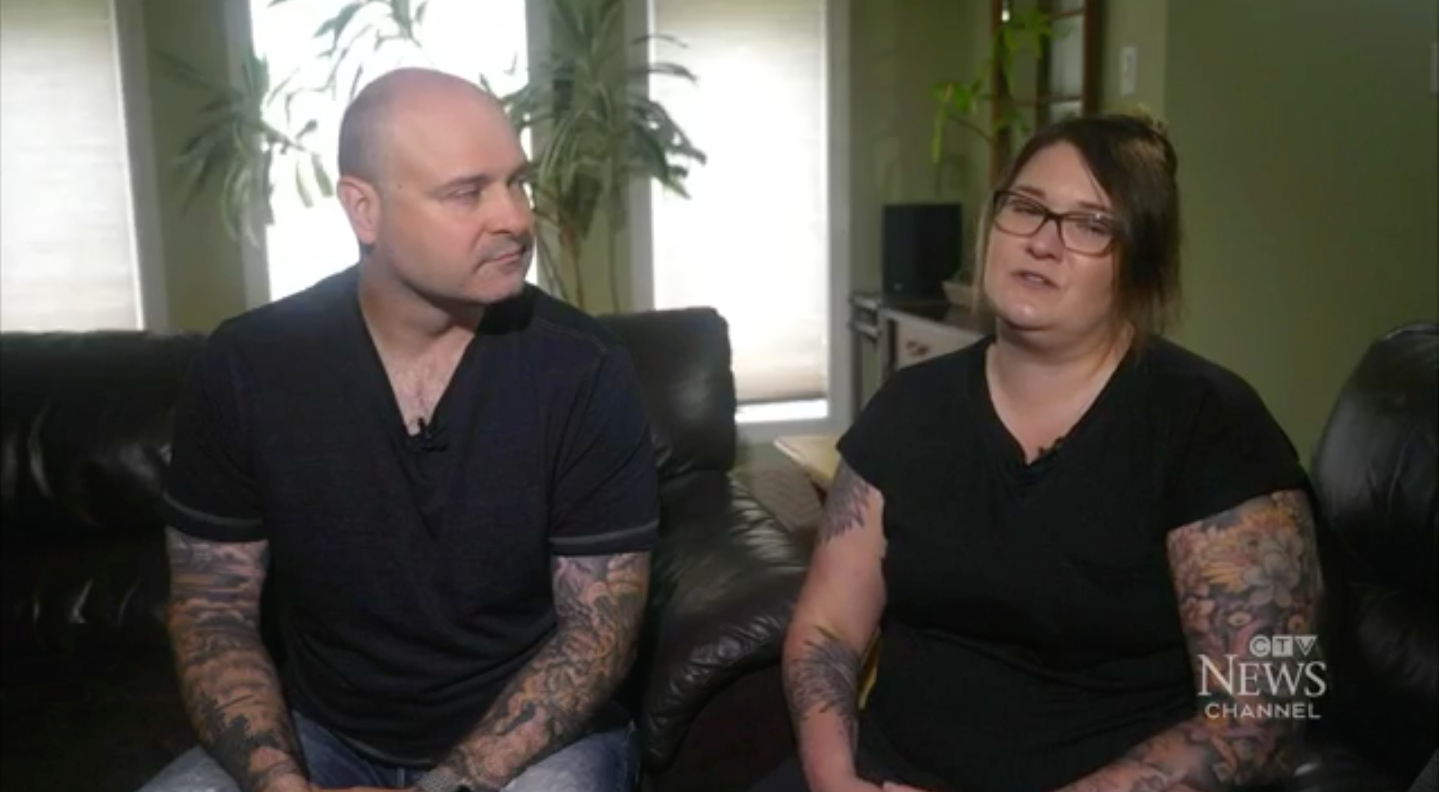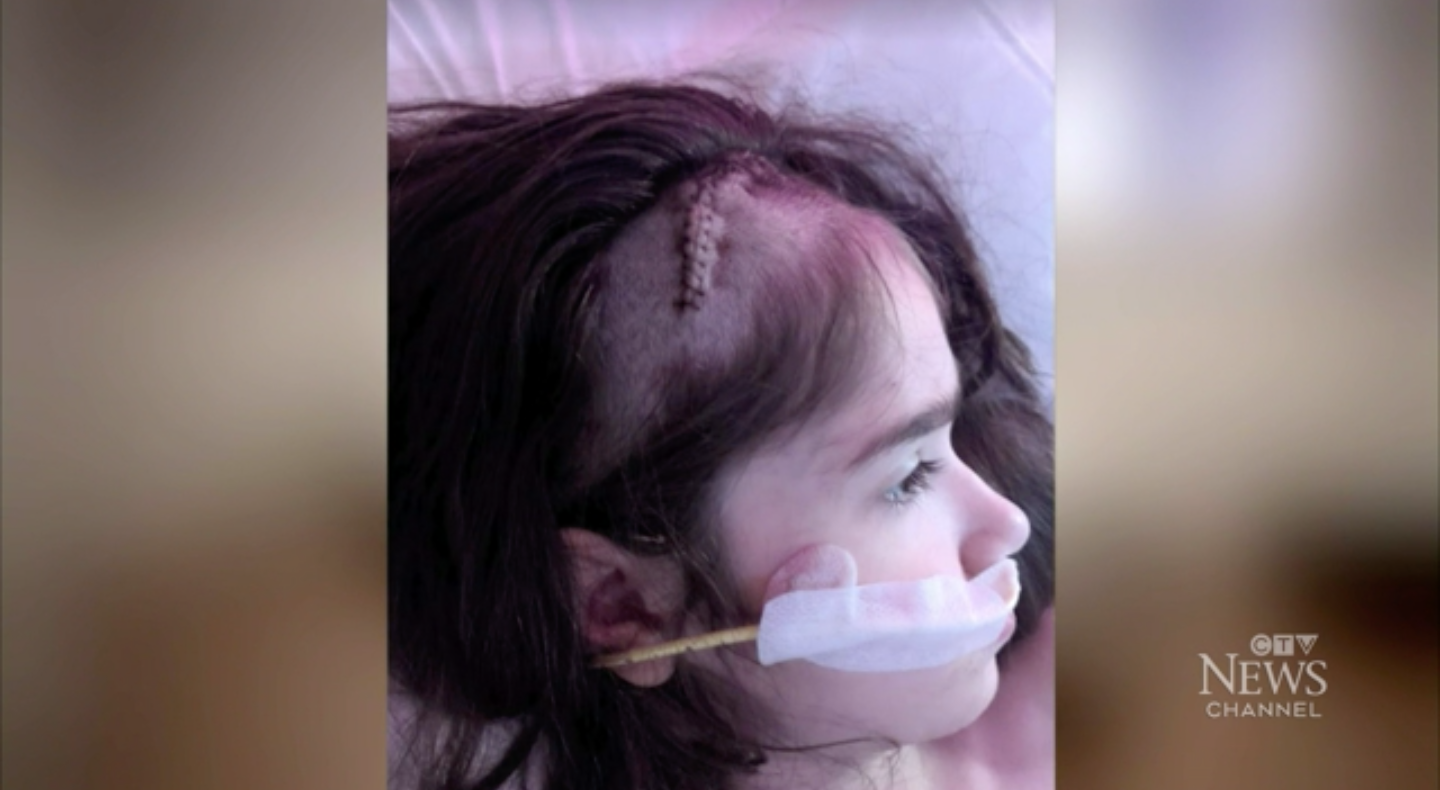
The preliminary results of an experiment on a Canadian girl diagnosed with a rare form of autism spectrum disorder has stunned researchers after they were able to send electrical signals deep into her brain and stop the 9-year-old from inflicting herself with severe self-harm.
Ellie Tomjanovic lives in the southern Ontario city of Barrie, lying just about 100km away from the SickKids hospital in Toronto where she received the experimental treatment of deep-brain stimulations (DBS) in December 2020 for her self-injurious behaviour.
Ellie, who was diagnosed with the rare genetic neurological disorder called Pitt-Hopkins syndrome when she was a child, had been engaging in violent outbursts for years, which included banging her head, biting, and even attempting to swallow her hands. At one point, her parents told CTV News they feared for their young daughter’s life.
“It got pretty bad,” Lisa Tomjanovic told CTV News in their first sit-down interview since the procedure took place more than 18 months ago. In video footage shared with the news outlet, Ellie can be seen thrashing about in her car seat and biting at hospital workers as they attempt to restrain her from hurting herself. “Ellie ended up fracturing both of her cheekbones,” the mother told CTV, adding that she’s also had injuries that led to her teeth getting knocked out, and has even suffered her own wounds when attempting to intervene.
“Both my arms were covered in bruises, bites along the side of my neck.”
Self-injurious behaviour can be a side effect of children and adults who are diagnosed with ASD, though it can occur more commonly in some syndromes than others, such as the one that Ellie was diagnosed with.

According to a study published in the Journals of the American Medical Association, it was found in a meta-analysis that the odds of self-harm were three times more likely than in people without ASD. And among children, the Journal of Autism and Developmental Disorders found in a study that nearly 28 per cent of 8-year-old children with ASD can behave in ways that can lead to self-injury, with specific behaviours like head banging, arm biting, and skin scratching being found to be more common among children with ASD.
Doctors believe that the violent outbursts expressed by some children could be a pathway for expressing frustration, particularly so for children who may be non-speaking. For Ellie’s parents, they decided to look for alternative forms of treatment after they found their current recourse was proving to be unsustainable.
“Our days were pretty much holding Ellie down,” Ms Tomjanovic said, while confessing that a full working day – eight to 10 hours – could easily be dedicated to just trying to keep their 9-year-old from harming herself.
“We cannot physically hold her down all day,” she added. After sedatives and anti-psychotics stopped working, they pinned their hopes on an experimental treatment being offered at the Hospital for Sick Children in Toronto with paediatric neurosurgeon Dr George Ibrahim.
While at the appointment, Dr Ibrahim explained how they were opening up a first-of-its kind experiment at the hospital, called deep brain stimulation (DBS), to treat children diagnosed with ASD who were suffering from life-threatening self-injurious behaviour.

The parents, feeling run out of options, heartily agreed to the procedure. In December 2020, Ellie had two electrodes implanted deep into her brain, with wires running through her neck into her chest where a battery was also added.
The electric nodes send an electric current deep into Ellie’s brain, in a manner that’s like the electroshock therapy that’s proving to be successful for relieving symptoms in people diagnosed with chronic depression who have otherwise been unresponsive to therapy and drugs.
The American Association of Neurological Surgeons describes DBS as being safe and effective when candidates for the surgery are properly selected. They add that “risks and potential side effects do exist, but they are generally mild and reversible” and these can include, a one per cent risk of brain hemorrhage, infection, device malfunction, headache and in some cases a worsening mental or emotional status. During stimulation, patients might experience tingling, a sensation of muscles being pulled, speech/vision problems or a loss of balance.
Dr Ibrahim explained in an interview with the news outlet that the device can be adjusted so that they can gauge what specific amount of electrical current Ellie best responds to. Shortly after the first of its kind procedure, Dr Ibrahim says the results have proven to be “very encouraging”.
“It really amazed me,” he said, while Ellie’s mother said at home, the implications of the surgery were felt immediately. “She was engaged … and laughing and clapping,” said Ms Tomjanovic.
The findings from the Ontario experiment mirror the results from previous studies that looked at the relationship between DBS and self-harm in children diagnosed with ASD.
In 2013, researchers published the results of an experiment on a 13-year-old boy diagnosed with life-threatening self-injurious behaviour (SIB) and severe Kanner’s autism and how he responded to DBS. During that study, researchers drew the initial conclusions that the treatment was “effective” and did not evoke any negative side-effects but recommended more research to support their findings.
More recently, a systematic review of the procedure was published in September 2022 in Interdisciplinary Neurosurgery. The analysis, which looked at seven published articles about patients who underwent DBS for ASD accompanied by life threatening self-injurious behaviour, showed that stimulating the brain in this manner could be effective for “severe, medically refractory symptoms in children and adults with autism spectrum disorders”.
Ellie’s results not only echo previous findings but is also paving the way for more research to expand on the positive response she’s had undergoing DBS to treat her self-harming behaviour.
Dr Ibrahim and doctors at the Hospital for Sick Children are now opening their clinical trial to include five more children diagnosed with severe self-harming behaviours to further test the efficacy of deep brain stimulation.
"Their job now is to actually establish both safety and effectiveness … to understand whether this is a viable long-term option," said Dr Evdokia Anagnostou, an autism specialist who was also consulted by SickKids in the design of the trial, in an interview with CTV.
Some parents, such as the Tomjanovics, were sceptical of the procedure, particularly given the risks that are carried with placing your child under anaesthetic in a surgery.
And Dr Anagnostou conceded that those risks are worth calibrating when deciding whether an invasive procedure such as brain surgery is worth it for a family, while also conceding that medications carry their own side effects.
“A lot of the medications we use for lethal efficacy sometimes have a lot of side effects. So if we had a procedure that was relatively safe and produced large effects … parents probably would change how they think about the potential benefit,” Dr Anagnostou told the news outlet.
Ellie has so far had three minor surgeries to replace the battery that controls the electrodes, which is located in the 9-year-old’s upper right chest. She’s due for her next replacement surgery in September, as the battery requires replacing every six months.
As recently as June 2022, Ellie had no serious side effects, according to the news outlet. And her parents continue to sing the procedure’s praises.
“As scary as it is to drill into their brain and have this big piece hanging out of their chest,” Ellie’s mom told CTV, “It’s worth it”.







